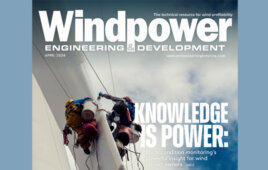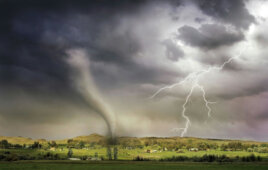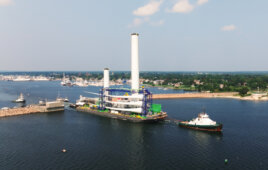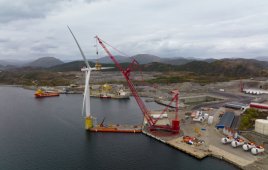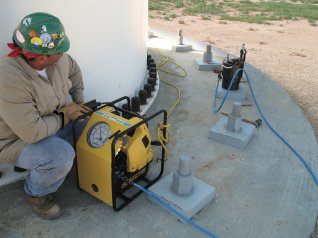
Earlier this year, Enerpac introduced new electric tensioning pumps for wind-turbine assembly. Learn more here.
Enerpac manufacturers tools and accessories designed to increase productivity while making work safer and easier to perform — including for jobs at wind sites.
Windpower Engineering & Development recently asked the company to answer three key questions about tools and safety in the wind industry. Here are the answers…
1.What’s new in tools for the wind industry?
Electric tools bring a new category of tools into the wind industry. For example, the benefits of electric wrenches relate to convenience and portability. Unlike hydraulic tools, electric ones are lighter (there’s no need for heavy pumps) and that’s a big plus when climbing a turbine tower to a nacelle.
Considerations for size envelope, tethering, weight, and ease-of-use are a must for wind technicians. The consistency of performance is also key to the reliability of new electric tools.
Other important considerations are the tool’s features and durability. If tools are for use in harsh conditions or offshore wind applications, torque wrenches and tensioners must be made from high-grade stainless steel and nickel-plated to perform safely and efficiently. Subpar product designs are simply not an option for work on critical assets or in hazardous locations.
Additionally, where the tool is manufactured matters. A company with an in-house engineering and design team can often offer upgrades, such as onboard tool diagnostics, extreme-weather pendant controls, and a technical support team to ensure wrenches and tensioners are driven with safe, smart technology.
2. Can you please share some safety tips when handling tools at wind sites?
Safety starts with proper preparation and training, and ends with execution. Always start the day with a safety briefing of the potential hazards of the required tasks and job site. This means going over the tools required for the job, including tool performance testing and inspection of each tool (as per equipment’s owner’s manual) before heading out into the field.
Also, it is important to complete a verbal safety checklist with your team at a site. For example, this should include going over potential pinch-points of tools and signals between team members (verbal or non-verbal signals). Also, remember to stay hydrated and dress appropriately (with the correct gear, fall-protection, and even sunscreen as required) throughout the workday.
3. What training is essential to work in the wind industry?
Training is key for all levels of an organization, and particularly for work at height in the wind industry. Wind tech training courses are a must to meet standardized expectations of competency. It is also important to attend refresher courses often.
An excellent in-direct skillset is to learn proper body mechanics. This program teaches safe lifting skills, stretching techniques, and best practices to reduce the likelihood of job site injuries. Other skill sets beneficial to a wind tech’s job include general hydraulic maintenance and first-aid training.
Filed Under: Featured, Safety

